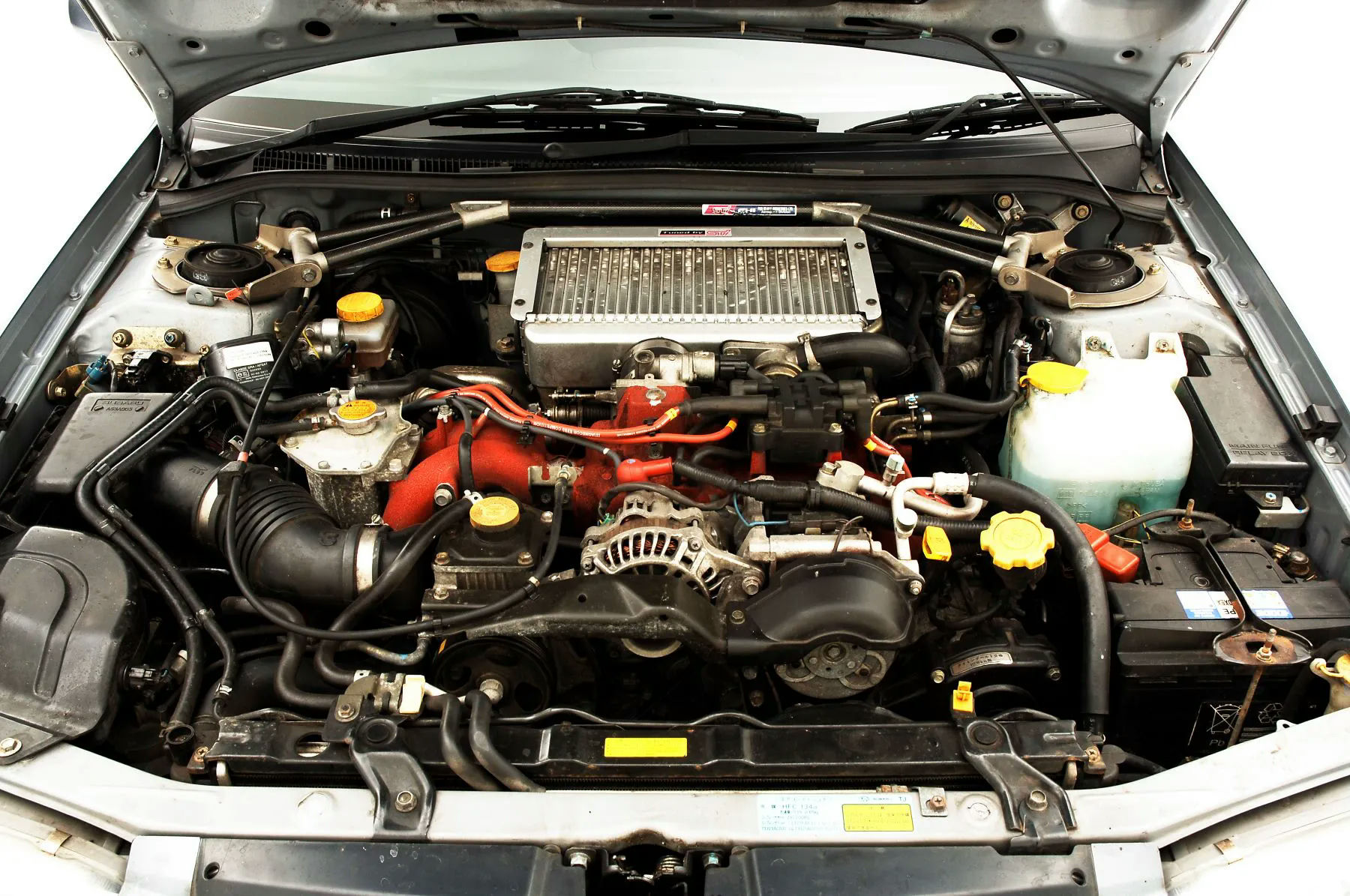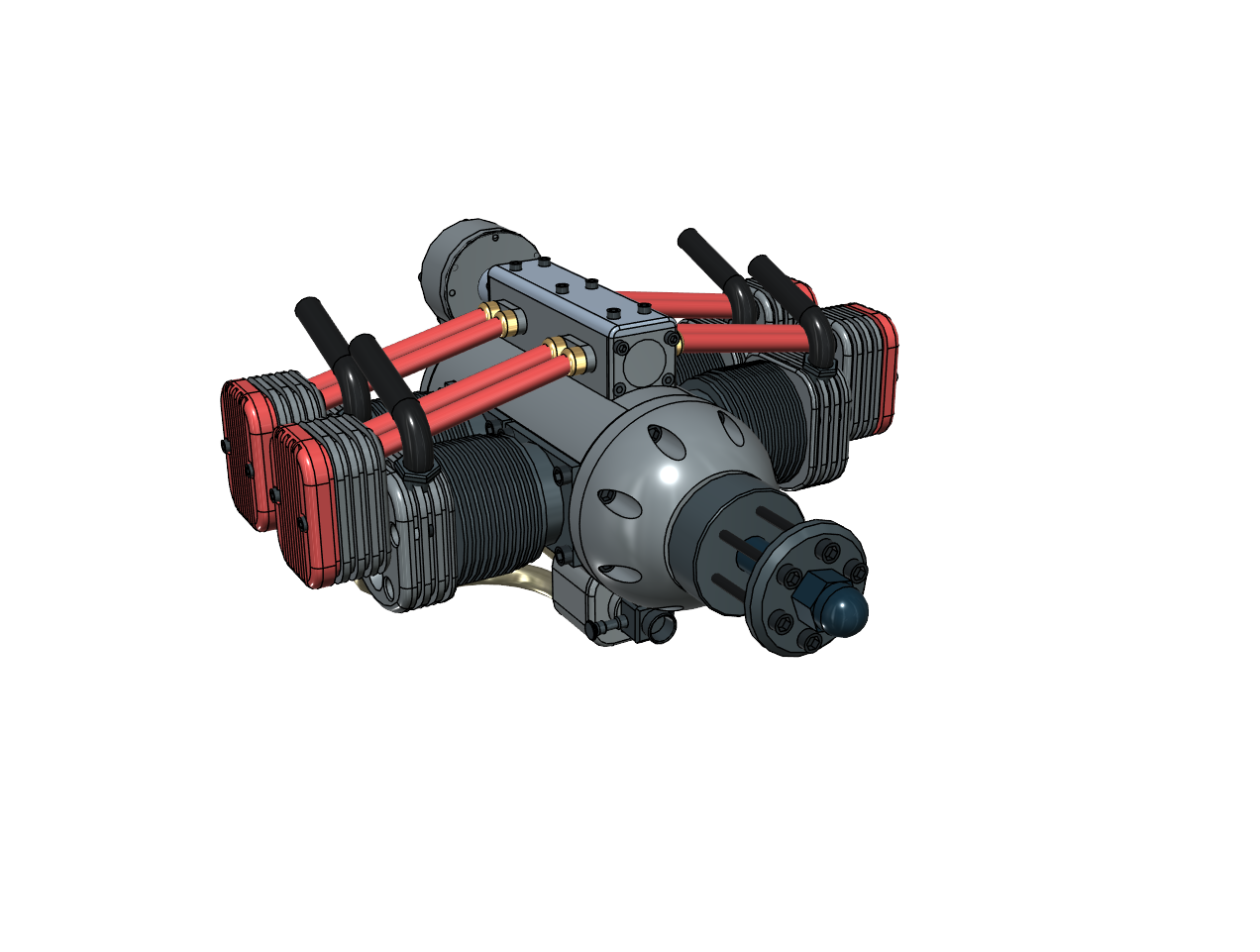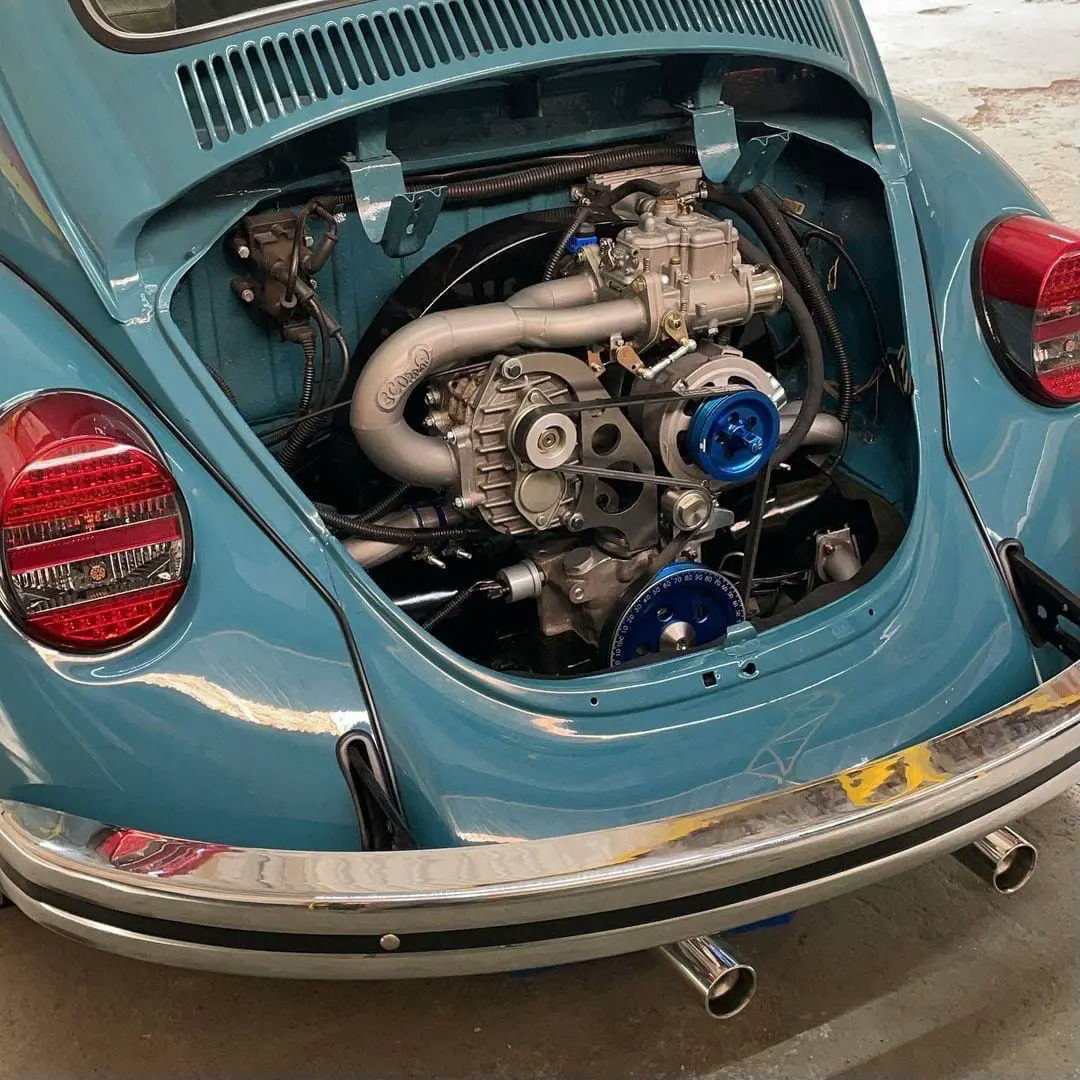
The Flat-4 Engine Layout: A Historical Perspective
The Flat-4 engine layout, also known as the horizontally opposed engine, has a rich history dating back to the early 20th century. This unique engine configuration gained prominence for its balanced design, which minimizes vibrations and allows for a lower center of gravity, making it a popular choice in both aviation and automotive applications. The Flat-4 engine operates by positioning its four cylinders horizontally in two banks on either side of a central crankshaft, which not only enhances mechanical efficiency but also provides better stability and handling for vehicles. While its complexity and initial cost can be higher than traditional inline engines, the benefits of smoother operation and improved vehicle dynamics have made the Flat-4 a staple in models from renowned manufacturers like Subaru and Porsche.

Balanced Weight Distribution
One of the key advantages of a Flat-4 engine is its balanced weight distribution. The horizontally opposed cylinders are positioned symmetrically, contributing to even weight across the engine bay. This balance can lead to better handling and stability on the road, which many drivers appreciate, especially when cornering or driving at higher speeds.
Lower Center of Gravity
A Flat-4 engine sits lower in the engine bay compared to inline or V-type engines. This lower center of gravity can improve the vehicle's overall stability and reduce body roll. Drivers may notice that their car feels more planted and composed, particularly in situations requiring quick maneuvers.
Smoothness and Reduced Vibration
The design of the Flat-4 engine helps it run smoother with less vibration. The opposing movement of the pistons tends to cancel out vibrations that would otherwise be transmitted to the car. This can make for a quieter, more comfortable driving experience, particularly on longer journeys.
Compact Design
Flat-4 engines are relatively compact, taking up less space under the hood. This can leave more room for other components or for a larger cabin area, benefiting drivers and passengers alike. Additionally, the compact design can make certain maintenance tasks more straightforward.
Efficient Cooling
The layout of a Flat-4 engine can provide efficient cooling through air or a combination of air and liquid. The cylinders being exposed to airflow helps keep the engine at optimal operating temperatures more easily. This can be especially beneficial in preventing overheating during demanding driving conditions.
Improved Safety
Because Flat-4 engines are low-slung and flat, they can contribute to improved safety. In the event of a frontal collision, the engine is more likely to go under the cabin rather than straight into it. This design can offer added peace of mind for drivers concerned about crash safety.
Reduced Access for Repairs
The flat-4 engine configuration often makes accessing certain engine components more difficult. This can lead to increased labor time for repairs and maintenance, such as changing spark plugs or performing a head gasket replacement. The placement of the engine means mechanics might need to dismantle more parts, raising the cost and duration of service.
Higher Center of Gravity
While the flat-4 engine is mounted lower than some other engine types, certain components like the exhaust manifold may elevate the car's overall center of gravity slightly. This can affect handling, especially in high-speed cornering or during quick maneuvers. Drivers might find the car feels less planted compared to other configurations.
Vibration Issues
The inherent design of the flat-4 engine can sometimes result in vibration issues at certain RPMs. Despite the layout's natural balance, harmonics at specific engine speeds may lead to noticeable vibrations within the cabin. These vibrations can detract from the overall driving experience and comfort.
Limited Tuning Potential
Enthusiasts who enjoy modifying their engines may find the flat-4 layout less responsive to certain tuning activities compared to inline or V engines. The design can limit some types of upgrades, such as turbocharging options and performance enhancements. This could be a disappointment to those looking to squeeze out extra horsepower.
Weight Distribution Challenges
The flat-4 engine's unique layout might affect the vehicle’s weight distribution in a way that isn't ideal for all driving conditions. For example, achieving a perfect 50/50 weight balance can be trickier, which impacts the car’s handling dynamics. This can lead to understeer or oversteer in certain driving situations, requiring more skill from the driver.

The Flat-4 engine layout, or the horizontally opposed 4-cylinder engine, has found its way into various vehicles, offering unique advantages and posing certain challenges.
One of the most notable applications is in Subaru vehicles. Subaru uses the Flat-4 engine extensively in models like the Subaru WRX, Subaru Outback, and Subaru Forester. These engines provide a lower center of gravity, enhancing handling and stability, which is particularly beneficial for all-wheel-drive systems that Subaru is renowned for.
Another classic example is the Volkswagen Beetle. The Beetle's air-cooled Flat-4 engine made it an icon of simplicity and reliability. The rear-engine layout combined with the Flat-4's compact size delivered excellent traction and a distinctive driving experience that endeared it to millions worldwide. The simplicity of the design also made it easy to service and repair, a big plus for many car owners.
Porsche, an automotive brand synonymous with performance, has a storied history with Flat-4 engines, especially in the Porsche 356 and the early models of the Porsche 912. These engines were vital in achieving a balance between weight distribution and handling dynamics, characteristics that became a trademark of Porsche's driving experience.
The Chevrolet Corvair is another interesting example. While controversial for other reasons, the Corvair's use of an air-cooled Flat-4 engine in a rear-engine configuration was fairly innovative for an American car, differentiating it from the typical front-engine V8 layout dominating the market at the time. Its unique engineering did manage to attract a dedicated following.
In Japan, the Toyota 86 (and its sibling, the Subaru BRZ) also utilize a Flat-4 engine configuration. This modern sports coupe benefits from the layout’s lower center of gravity, which aids in agile handling and balanced performance. The collaboration with Subaru for the engine and technical know-how ensured the Flat-4 layout was effectively utilized for sporty driving dynamics.
Lastly, in the aviation world, small aircraft like those using Rotax engines also employ Flat-4 configurations. While not a car, it’s worth mentioning as it underscores the versatility and robustness of the engine layout beyond the automotive realm, reflecting its adaptability and broad use cases.
In conclusion, the Flat-4 engine layout has made its mark across a diverse spectrum of vehicles, offering unique handling advantages and packaging benefits. Whether in the rugged terrain tackled by Subaru’s Outback, the classic aesthetic of the Volkswagen Beetle, or the precision of a Porsche 356, the Flat-4 continues to prove its worth in both historical and modern contexts.
That's just over the last decade according to the night Franks Luxury Investment Index, making it the best-performing asset class of any other type of collectible. MyGarage.AI was developed to take your car collection and preservation the extra mile with a growing list of innovative features.
Utilize cutting-edge AI to discover fascinating facts about your car and compose engaging, descriptive narratives that highlight its unique story.

Access vast datasets to populate your car’s specifications, title history, and more, ensuring your records are detailed and accurate.

Document key aspects of your car’s history, maintenance, restoration, customization, and performance. Preserve every detail that makes your car special.

Store photos, videos, and records of awards or special recognition, creating a rich, visual history of your vehicle.

Join group forums and participate in event postings to connect with fellow car enthusiasts and build a supportive community.

Enjoy complete control over your privacy and sharing settings. Share your car’s legacy through a searchable gallery or on social media platforms with ease.

Our mobile-friendly platform makes it easy to document and share your car’s legacy anytime, anywhere.

Discover, preserve, and share the legacy of your precious automotive assets to increase their appeal and value.